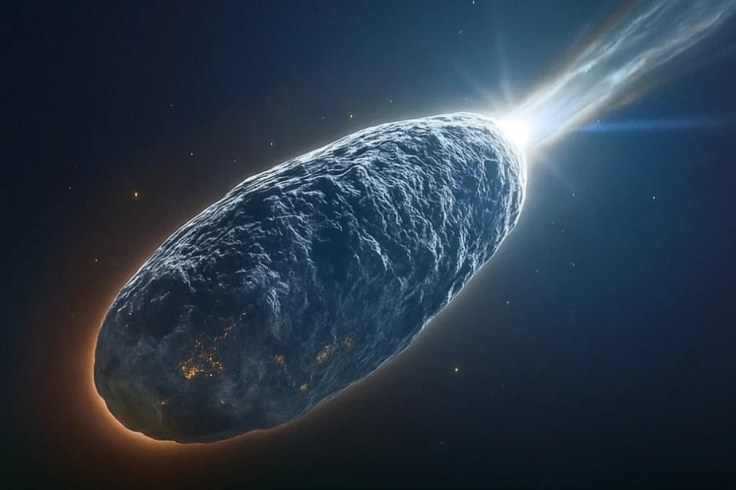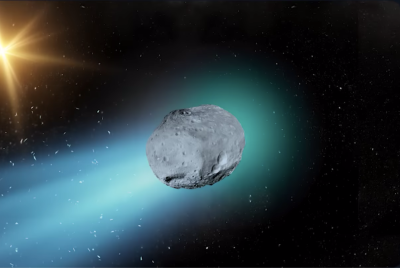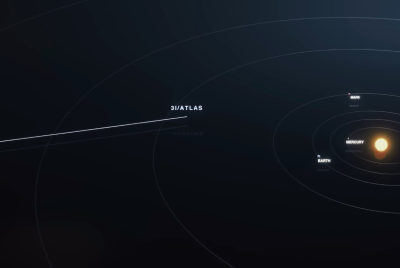Cosmic Mystery Deepens: 'Dropped Probes' On Interstellar Visitor Spark Wild Claims
Amid swirling speculation and scientific discovery, this third‑known interstellar visitor challenges our assumptions about space, technology and the unknown.

A singular cosmic visitor may be holding secrets far beyond our solar system, and possibly beyond natural origin.
Since its detection on 01 July 2025, 3I/ATLAS has puzzled astronomers with its unusual speed, trajectory, and composition. Recent claims have intensified the mystery: an online post suggests that this interstellar object may have released small probes and is on a 'perfect' trajectory toward Earth. The post appears on X (formerly Twitter) via the handle AstronomyVibes, which alleges a sequence of events involving dropped probes emanating from 3I/ATLAS.
🚨 The Green Line Mystery — What Is 3I/ATLAS Really Doing Out There? 🛸
— Astronomy Vibes (@AstronomyVibes) November 9, 2025
Take a close look at this image. That green line isn’t just random — it could be the key to something huge.
If 3I/ATLAS, the interstellar object now moving through our Solar System, dropped off smaller… pic.twitter.com/hnngfnoIpr
While these claims remain unverified, they underscore the broader scientific debate about the nature of 3I/ATLAS and whether it is purely a comet or something more engineered.
Unusual Trajectory And Composition
3I/ATLAS is only the third confirmed interstellar object to enter our solar system, following 1I/ʻOumuamua and 2I/Borisov.
It was first observed by the Asteroid Terrestrial‑Impact Last Alert System (ATLAS) telescopic survey on 01 July 2025, and subsequent analysis determined a hyperbolic trajectory consistent with an origin outside the solar system. Infrared spectroscopy from the James Webb Space Telescope (JWST) revealed its coma to be dominated by carbon dioxide with high CO₂/H₂O mixing ratios, a rarity for typical comets.
On top of that, the object has accelerated in ways not entirely accounted for by standard outgassing models, further prompting some scientists to pose non‑natural hypotheses.
Probe‑Release Claim And Scientific Response
The viral X post asserts that 3I/ATLAS released small probes on a 'perfect trajectory' toward Earth, feeding into speculation about extraterrestrial intelligence. This forms part of a broader claim that the object transmitted structured signals at the 1420 MHz hydrogen‑line frequency, specifically, a Fibonacci‑sequence pulse pattern of 8 • 13 • 8 • 5 • 13 • 8.
However, the scientific community remains unconvinced. As the Times of India analysis notes, there is no observable, verified signal detected from 3I/ATLAS, and the claim lacks peer‑reviewed evidence.'
Similarly, senior astronomers state that extraordinary claims of design require extraordinary evidence, and on current data, 3I/ATLAS behaves more like a natural body than an engineered probe.
Nevertheless, Avi Loeb of the Galileo Project has publicly commented on the object's anomalies and left open the possibility of artificial origin, even if 'the most likely outcome will be a natural interstellar object'.
These competing views fuel a media narrative filled with intrigue and scientific significance.
Why This Story Resonates (And What We Still Don't Know)
There are several reasons why the 3I/ATLAS story is rapidly gaining traction: public fascination with alien life, the mystery of objects from beyond our solar system, and the dramatic claim of probe deployment.
It also sits at the crossroads of astrophysics, planetary science, and science‑fiction‑style speculation, making it a rich story for both expert subplots and human‑interest angles.
Yet large gaps remain: no peer‑reviewed evidence supports the probe‑release scenario, and the object's behaviour and composition, while unusual, do not yet defy natural explanations. Scientists still lack full data on its nucleus size, detailed composition, and long‑term trajectory. Future observations after its perihelion passage and as it departs the solar system will be crucial.
For now, the mystery of 3I/ATLAS continues, and between curiosity and caution, we wait.
© Copyright IBTimes 2025. All rights reserved.





















